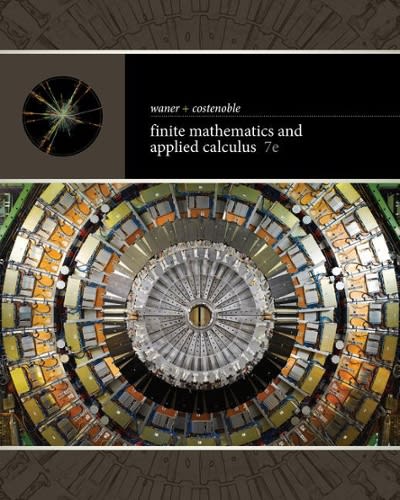Question
A DNA nucleotide has any of four qualities. A standard model for a mutational difference in the nucleotide at a particular area is a Markov
A DNA nucleotide has any of four qualities. A standard model for a mutational difference in the
nucleotide at a particular area is a Markov chain model that guesses that in going from period
to period the nucleotide doesn't change with likelihood 1 30, and on the off chance that it transforms, it is
similarly prone to change to any of the other three qualities: for some O <
= {+ 4a)'t
(a) Show that pn
(b) What is the since quite a while ago run extent ot time the chain is in each state?
62))
Every person in a populace of size N is, in every period, either dynamic or idle. In the event that an
individual is dynamic in a period at that point, autonomous of all else, that individual will be dynamic in the
next period with likelihood a. Essentially, if an individual is dormant in a period them autonomous ot
all else, that individual will be idle in the following period with likelihood p. Allow Xn to mean the
number of people that are dynamic in period n.
(a) Argue that X n, n is a Markov chain.
(b) Find E[XnlXo = II.
(c) Derive an articulation for its progress probabilities.
(d) Find the since quite a while ago run extent of time that precisely j individuals are dynamic.
Clue for (d): Consider first the situation where = 1.
63))
Every one of two switches is either on or off during a day. On day n, each switch will autonomously be on with likelihood [1 + number of on switches during day n - 1]/4 For example, assuming the two switches are on during day n - 1, each will freely be on during day n with likelihood 3/4. What part of days are the two switches on? What division are both off? 33. Two players are playing a succession of focuses, which start when one of the players serves. Assume that player 1 successes each point she presents with likelihood p, and wins each point her rival presents with likelihood q. Assume the victor of a point turns into the worker of the following point.
64))
An insect moves around the vertices of a triangle in the accompanying way: Whenever it is at vertex I it moves to its clockwise neighbor vertex with likelihood and to the counterclockwise neighbor with likelihood qi= 1 - Pi, I = 1, 2, 3.
(a) Find the extent of time that the bug is at every one of the vertices.
(b) How frequently does the insect take a counterclockwise action that is then trailed by five sequential clockwise moves?
Step by Step Solution
There are 3 Steps involved in it
Step: 1

Get Instant Access to Expert-Tailored Solutions
See step-by-step solutions with expert insights and AI powered tools for academic success
Step: 2

Step: 3

Ace Your Homework with AI
Get the answers you need in no time with our AI-driven, step-by-step assistance
Get Started


